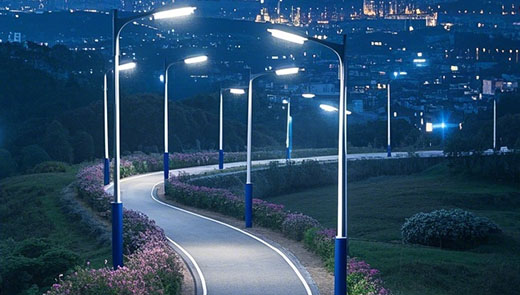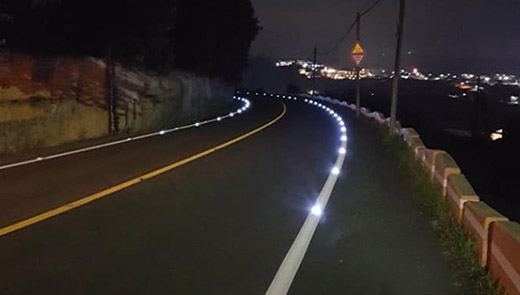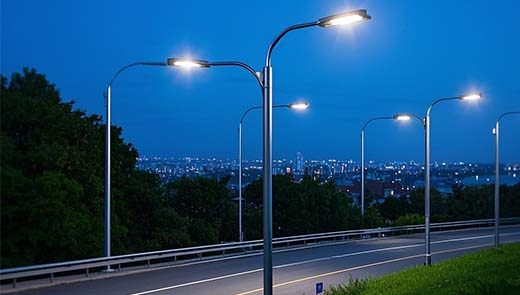What Is All-in-one Solar Street Light
In today's society, conventional street lighting faces a number of difficult problems. On the one hand, traditional street lighting relies on grid power, which leads to high electricity bills and increased operating costs for municipalities and related authorities. On the other hand, the complicated wiring work not only consumes a lot of labor and material resources, but also may cause damage to the urban landscape and underground pipelines. The emergence of one-piece solar street light is like a revolution in the field of lighting, effectively solving these long-standing problems. Next, let's explore this innovative lighting equipment in an all-round and in-depth way.
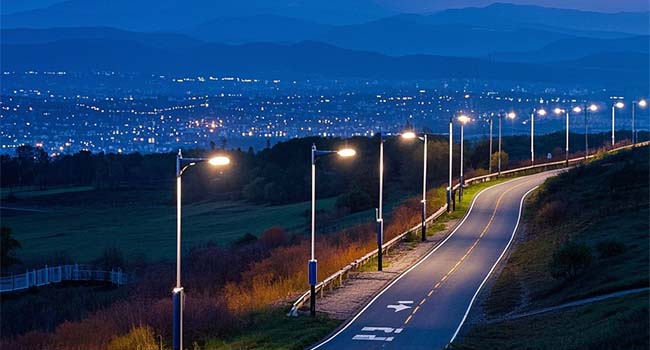
Definition and design
Integrated solar street light, as the name suggests, adopts a highly integrated design concept. It skillfully integrates solar panels, batteries, controllers and light sources into an organic whole. This design approach brings a number of compelling advantages. First, the compact size and light weight make the transportation process extremely convenient. In the past, split solar street lights had high transportation costs due to scattered components and large packaging volume. The one-piece solar street light effectively avoids this problem and significantly reduces the difficulty and cost of transportation. Secondly, its simple installation process greatly saves time and energy. When installing traditional street lights, professional electrical engineers are required to carry out complicated wiring and debugging work, while users of integrated solar street lights can easily complete the installation without professional knowledge and skills.
The Main components of all-in-one solar street light
Solar panel
The solar panel is located at the top of the street light equipment, like a pair of sharp “eyes”, always capturing the energy of the sun. It efficiently converts sunlight into electricity through the magic of photovoltaic cells. Currently, there are three main types of solar panels on the market: monocrystalline silicon, polycrystalline silicon and amorphous silicon. Monocrystalline panels stand out from the rest with their conversion efficiency of up to 20% or more, making them the first choice for users seeking efficient power generation. Polycrystalline silicon panels also occupy an important share of the market due to their relatively low cost, although their conversion efficiency is slightly lower. Amorphous silicon panels, on the other hand, play a unique role in flexible application scenarios.
In addition, the size of the panel has a direct impact on power generation. Under the same lighting conditions, a larger panel can collect more sunlight, thus generating more electricity. For example, a high-efficiency monocrystalline silicon panel with an area of 1 square meter can generate about 1.5 degrees of electricity per day under sufficient sunlight, providing sufficient energy security for the stable operation of street lights.
Storage battery
The storage battery is like the “energy bank” of the street light, which is installed under the solar panel. Its main function is to store the electricity generated by the solar panel during the day, so as to provide continuous and stable power support for the street light at night or when the light is insufficient. Currently, the common types of batteries on the market include lead-acid batteries, lithium batteries and nickel-metal hydride batteries.
Lead-acid battery has been widely used in early solar street lights due to its low price and mature technology. However, it also has shortcomings such as high weight, short life and environmental pollution. Lithium batteries, on the other hand, have gradually become the mainstream choice in the field of solar street lights by virtue of their advantages of high energy density, long service life and high charging and discharging efficiency. Although nickel-metal hydride batteries have superior performance, their application scope is relatively narrow due to high cost.
LED light source
When the light of the day gradually diminishes and the brightness of the surrounding environment decreases, the LED light source inside the street light will be automatically activated just like the stars in the night sky.LED light source has many significant advantages, first of all, it is highly efficient and energy-saving, compared with traditional incandescent and fluorescent lamps, the LED light source is able to convert more electric energy into light energy, thus reducing energy consumption. Secondly, LED light sources are durable and can withstand frequent switching and harsh environmental conditions. Furthermore, their long service life greatly reduces maintenance and replacement costs.
Currently, LED light sources on the market are divided into various types according to the different light-emitting colors and brightness. For example, white LED are suitable for roadway and public lighting, providing clear, bright light; while warm LED are more suitable for garden and landscape lighting, creating a warm, comfortable atmosphere.
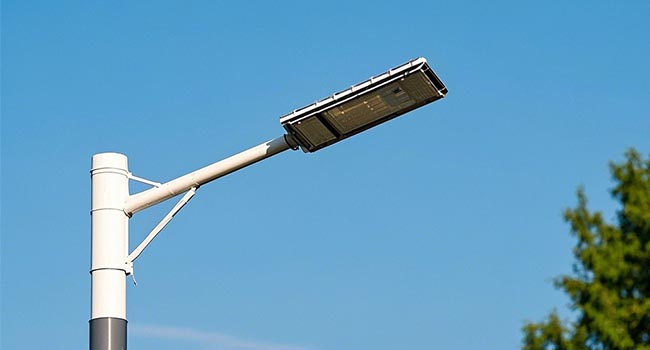
Controller
The controller is the “intelligent brain” of the integrated solar street light, which is responsible for managing the charging and discharging process of the battery to ensure the stable operation of the street light system. During the daytime, when the solar panel generates enough electricity, the controller will precisely control the charging current and voltage to prevent the battery from being overcharged, thus prolonging the service life of the battery. At night, the controller will automatically start the LED light source according to the light intensity of the surrounding environment and reasonably adjust the brightness of the light source to ensure that the lighting effect at the same time, maximize energy savings.
In addition, some high-end controllers also have remote monitoring and intelligent adjustment functions. Through wireless communication technology, users can know the working status of street lights anytime and anywhere, and realize remote control and management.
Optional functions
Motion sensor
Some integrated solar street lights are equipped with motion sensors, which is like giving the street light the ability to “sense”. When the sensor detects someone or an object moving, the street light will quickly and automatically switch to full brightness mode, providing sufficient lighting to ensure the safety of pedestrians or vehicles. When the activity stops, the light may return to a lower brightness or turn off automatically according to a preset program to save energy. This feature not only improves the efficiency of the street light, but also greatly extends the service life of the battery.
Dimming control
Some advanced integrated solar street lights have dimming function, which can automatically adjust the brightness of the street light according to the light intensity of the surrounding environment. In the darker environment, the street light will automatically increase the brightness to meet the lighting needs; while in the brighter light, the street light will reduce the brightness to avoid energy waste. This intelligent dimming function not only realizes the goal of energy saving, but also provides users with a more comfortable lighting environment.
How does the all-in-one solar street light Work?
During the day, the solar panel collects sunlight and converts it into DC power, which is transmitted to the battery for storage by the controller. In the meantime, the controller monitors the output of the panel and the charging status of the battery in real time to ensure safe and efficient charging.
In the evening, as the light becomes dark, the street light intelligent control system automatically starts the LED light source. Throughout the night, LED are illuminated by battery power, and the controller adjusts their brightness according to the preset program to maintain stable lighting. The next morning, when the sun returns, the solar panel resumes its work to recharge the battery, and the LED light source is automatically turned off to save energy. This cycle continues day after day, providing people with stable and reliable lighting services.
All-in-one Solar Street light advantages
Renewable energy
The integrated solar street light relies entirely on solar power and does not need to be connected to the grid, which not only realizes the sustainable use of energy, but also saves users a lot of money on electricity bills. Below is a comparison table showing the cost advantages over traditional grid-connected LED street lights over a 5-year period:
|
Street Light Type |
5-Year Total Electricity Cost Savings (%) |
Units Assumed |
|
Traditional Grid LED Street Light |
100 |
- |
|
Integral Solar Street Light |
40 |
60% |
In addition, the use of solar energy as an energy source reduces dependence on traditional fossil energy sources, lowers carbon emissions and makes a positive contribution to environmental protection.
Easy installation
The street light does not require complex external wiring, and the installation process is quick and easy, usually taking only a few minutes to complete. The installer does not need to have specialized engineering or electrical knowledge, and can easily complete the installation by simply fixing the street light to the pole and tightening the screws. Compared with traditional street light installation, it not only saves a lot of labor and time costs, but also avoids the damage to the environment caused by wiring construction.
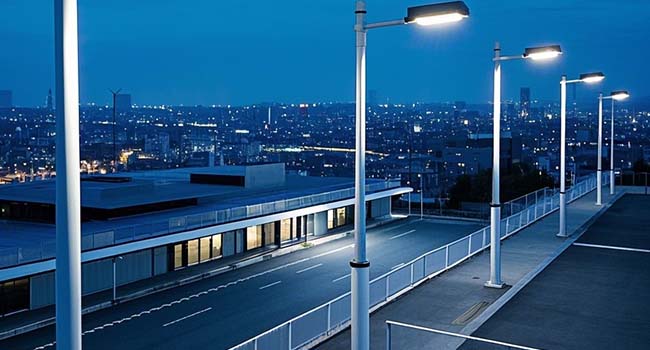
Low transportation cost
Due to the compact and integrated design, the one-piece solar street light is smaller in size and lighter in weight, which greatly reduces the transportation cost. In addition, this design also increases the transportation efficiency, the same container can be loaded with twice the number of street lights than traditional solar street lights, and also reduces the occupation of storage space, which brings higher profit margins for dealers.
Wide range of applications
With its wireless and independent design, the one-piece solar street light is very flexible to install. It can be installed on the wall to utilize the wall space to achieve lighting; it can also be installed on the light pole to provide lighting services for roads and squares; it can also be installed on the bracket to meet the lighting needs of different scenes. On the highway, it provides clear road guidance for vehicles and guarantees driving safety; in urban roads, it creates a bright and safe travel environment and enhances the image of the city; in rural trails, it is convenient for villagers to travel at night and promotes rural development.
In the square, to meet the lighting needs of people's leisure and entertainment, enriching people's night life; in the park, for walking, exercise people light up the road, so that people can enjoy the beautiful natural environment. In industrial parks, to ensure the smooth progress of production activities and improve productivity; in parking lots, to facilitate car owners to park and enhance the parking experience. In remote areas such as mountains and rural areas far away from the power grid, the integrated solar street light can also provide stable lighting and solve the local lighting problems with its own advantages.
High safety
As there is no need to lay wires, safety hazards such as leakage and electric shock are reduced. In addition, street lights are usually installed on top of the pole, reducing the risk of theft. This safety is especially important in some densely populated places, such as schools, shopping malls, parks, etc., which provides a reliable guarantee for the safety of people's lives and properties.
Strong disaster-resistant performance
Compared with the split solar street light, the compact design of the integrated solar street light makes its structure more solid, able to withstand hurricanes, typhoons and other inclement weather, ensuring that it can still work normally under extreme conditions. In areas that often suffer from natural disasters, such as coastal areas and mountainous regions, this disaster-resistant performance can provide stable support for the local lighting system and safeguard people's normal life.
Rust and corrosion prevention
The integrated solar street light is usually made of pure aluminum alloy with special surface treatment, which gives it excellent anti-rust and anti-corrosion performance, especially suitable for coastal high salt areas. In these areas, traditional street lights are easily eroded by salt spray, leading to rust and damage, while the integrated solar street light can effectively resist the erosion of salt spray and prolong its service life.
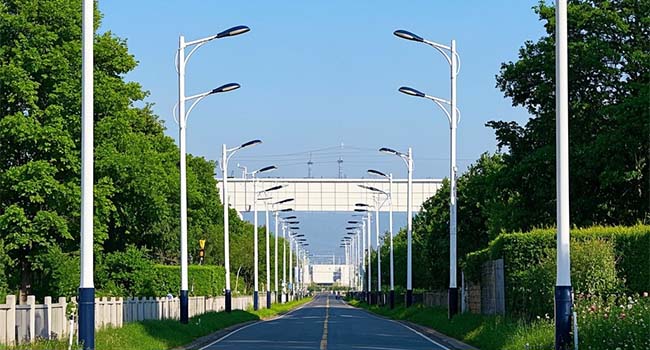
How to install all in one solar street light?
Selection of installation location
Choose a location with full sunlight throughout the day to ensure that the solar panel can receive direct sunlight. At the same time, avoid surrounding trees, buildings and other obstructions that may affect the charging efficiency of the panels. When choosing a mounting location, you also need to consider the lighting range and usage requirements of the street light to ensure that the street light can provide sufficient lighting for the target area.
Preparing the mounting pole or bracket
If new mounting poles are used, make sure they are securely fixed to the ground and can withstand the weight of the street light. When choosing a mounting pole, select the appropriate material and specifications based on the height and weight of the street light. For wall mounting, the bracket needs to be fixed on a stable wall using suitable bolts and screws. When installing the bracket, make sure that the bracket is mounted horizontally and vertically to ensure the installation of the street light.
Mounting the street light to the pole or bracket
Carefully align the one-piece solar street light to the mounting pole or bracket and secure it using the matching bolts and screws. During installation, pay attention to the direction and angle of the street light to ensure that the solar panel receives full sunlight and the LED light source provides good illumination of the target area. Use a wrench or socket to tighten the screws to ensure that the street light is firmly installed.
Adjusting the solar panel angle
To maximize the efficiency of the solar panel, it needs to be angled to face the sun. Most street lights are equipped with adjustable brackets, use a level to ensure the panel angle is correct and then tighten the adjusting bolts. The position of the sun will change in different regions and seasons, so the angle of the solar panel needs to be adjusted regularly to ensure its charging efficiency.
Check the operation of the street light
After installation, cover the solar panel to simulate the night environment and check whether the LED light source can light up automatically. If the street light fails to work properly, please refer to the product manual for troubleshooting. When troubleshooting, pay attention to check whether the solar panel, battery, controller and LED light source are connected properly and whether there is any damage to each component.
Final check
Finally, check that all bolts and screws are tight, that the street light is mounted securely, and check the alignment of the solar panel and adjust it if necessary. After the final check is completed, the street light can be officially put into use.
With its unique design, wide range of functions and numerous advantages, the one-piece solar street light provides efficient, energy-saving and safe solutions for various lighting scenarios. Whether in busy cities or remote villages, this kind of street light can play its value and meet people's lighting needs. With the continuous progress of science and technology and people's increasing awareness of environmental protection, the market prospect of the integrated solar street light will be even broader, and is expected to become a mainstream product in the future lighting field.

